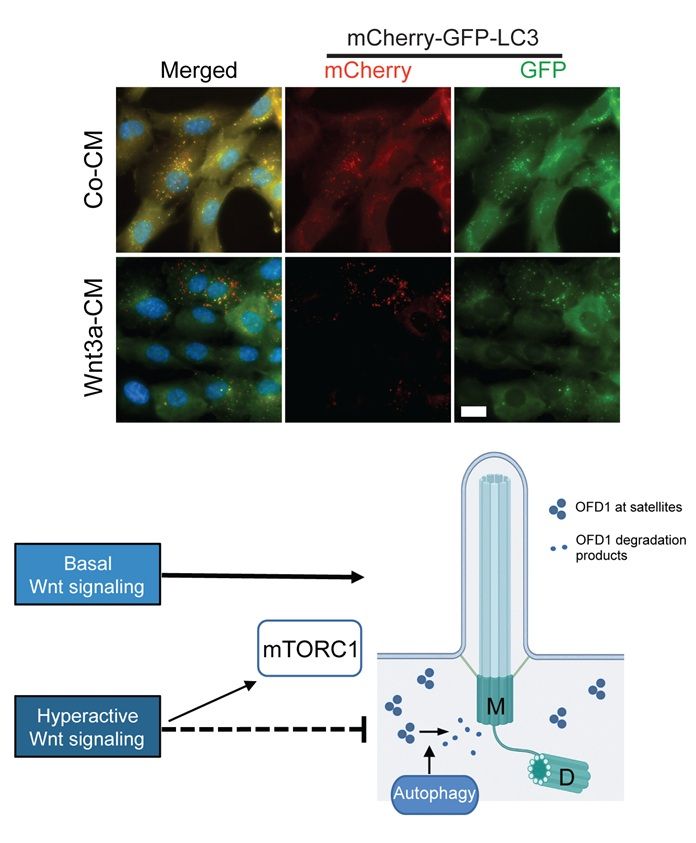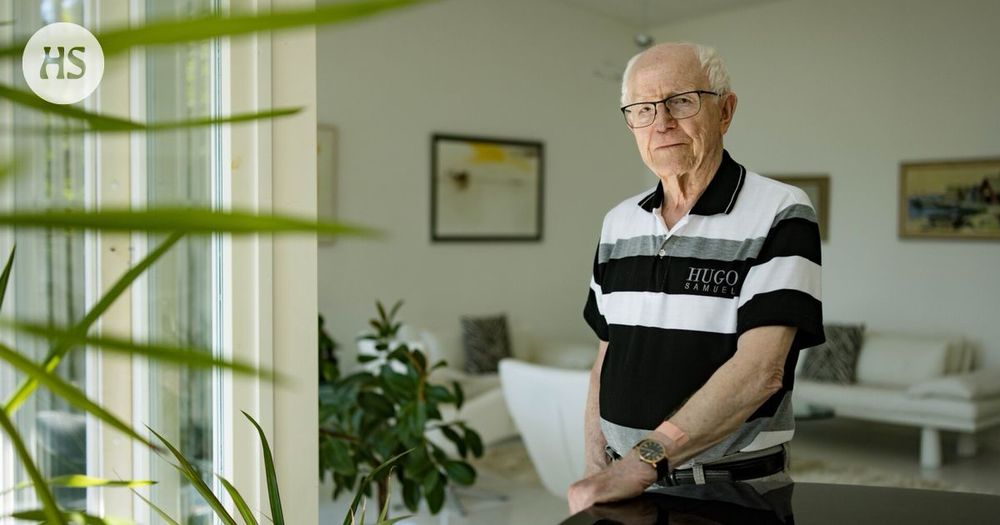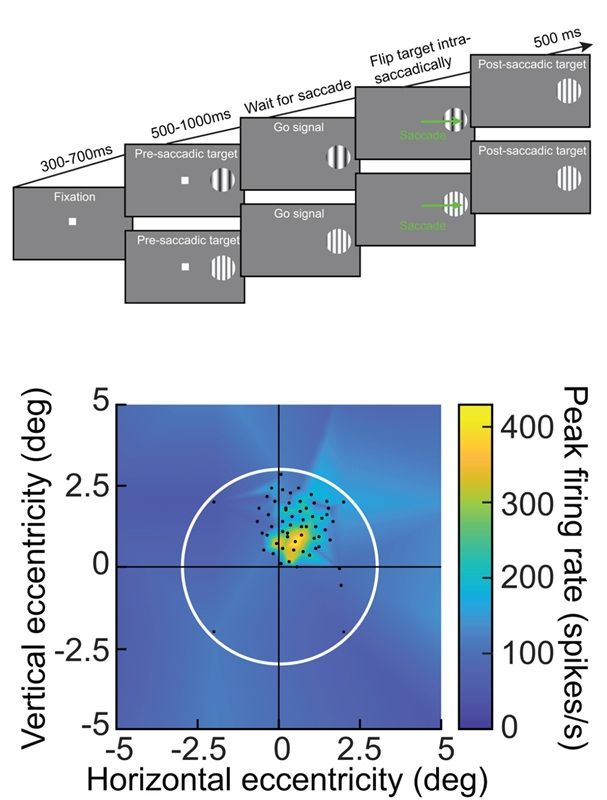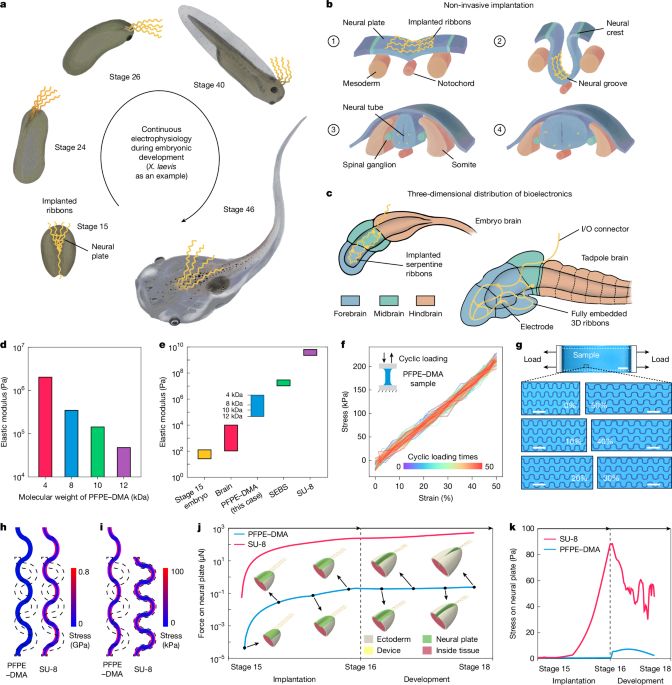Brian, we are thrilled to have you here! Amazing, that you and other colleagues came all the way from the States😍
26.09.2025 21:29 — 👍 2 🔁 0 💬 1 📌 0

An image showing each of the short listed nominees for the Nature Inspiring Women in Science Award with the award logo at the top. "Meet the shortlists for the Inspiring Women in Science Award" is in the middle. The Estee Lauder logo is at the bottom.
We are excited to present the shortlists for the 2025 Nature Awards for Inspiring Women in Science. Congratulations to the thirteen excellent candidates who made it to this year’s shortlist. Read more about the candidates and learn more about the award: go.nature.com/46nlAWy #WomeninStem
22.09.2025 18:14 — 👍 29 🔁 14 💬 1 📌 1
Webvision – The Organization of the Retina and Visual System
We are pleased to announce that Webvision has been fully migrated to our new home at the University of Pittsburgh. www.webvision.pitt.edu
All traffic should not automatically be redirected from the old URLs, but please update your links.
Heads up: @pittophthalmology.bsky.social
19.09.2025 07:45 — 👍 17 🔁 6 💬 0 📌 1

Vision scientist Alecia Gross at the lectern talking about retinal degeneration
It’s @alecia144g.bsky.social talking about her work in retinal degeneration at #RD2025
19.09.2025 09:49 — 👍 15 🔁 2 💬 0 📌 0
Beautiful image! I feel like I recognize this from our amazing tour in Prague😎
19.09.2025 23:21 — 👍 1 🔁 0 💬 0 📌 0

It’s #NationalPostdocAppreciationWeek! Postdocs are at the heart of discovery and innovation, pushing the boundaries of research and making a lasting impact on science and society. Join us in celebrating their invaluable contributions! #NPAW #Postdocs #FASEB
15.09.2025 19:15 — 👍 3 🔁 1 💬 0 📌 0
Kun on tässä seurannut tutkimusrahoitukseen liittyvää ns. keskustelua, niin ei voi välttyä ajatukselta, että olemme menossa kohti ankeita aikoja. Ymmärrys rahoituksen roolista tutkimukselle, korkeakoulutukselle ja maan tulevaisuudelle on monilta täysin hukassa. Pieni ketju aiheesta. 1/18
07.09.2025 15:59 — 👍 114 🔁 22 💬 1 📌 1
Come to the second edition of the world wide sodium channel conference! Submit an abstract by September 26.
06.09.2025 04:56 — 👍 5 🔁 3 💬 0 📌 0

Awards & Prizes - International Society for Eye Research ISER
The 2025 nomination period for the von Sallmann Prize will open October 1, 2025.
Vision Science Folks!
Time is running out to nominate a worthy colleague for an @iser.bsky.social International Prize!
Deadline for the Balasz, Bárány, and Kayser awards is September 8! Get nominatin'!
iser.org/page/Awards_...
03.09.2025 17:35 — 👍 6 🔁 4 💬 0 📌 0

Top: Inhibition of mTOR signaling rescues cilia formation in Wnt activated cells. RPE1 cells stably expressing mCherry-GFP-LC3 were treated with Co-CM and Wnt3a-CM and fixed 16 h after serum starvation for direct fluorescence analysis of mCherry and GFP signals. Representative images show GFP+mCherry+ foci (yellow dots, autophagosomes). Bottom: Model of how Wnt signaling affects ciliogenesis. Basal Wnt signaling promotes cilia formation, whereas Wnt hyperactivation prior to ciliogenesis delays this process by increasing mTORC1 activity and impairing the removal of OFD1 from centriolar satellites. M, mother centriole; D, daughter centriole.
The #PrimaryCilium regulates several signaling pathways, but what role do these pathways play in #cilium formation? This study shows that modulating Wnt & mTOR signaling affects #ciliogenesis in human retinal epithelial cells @plosbiology.org 🧪 plos.io/45Yg5gB
03.09.2025 17:01 — 👍 7 🔁 2 💬 0 📌 0
LinkedIn
This link will take you to a page that’s not on LinkedIn
🌍✨ Call for Nominations: ISER International Prizes ✨🌍
@iser.bsky.social is now accepting nominations for its prestigious international prizes! 🏆
📅 Deadline: September 8, 2025
🔗 lnkd.in/eUQMFGsr
Don’t miss the chance to recognize excellence in our field — submit your nomination today!
21.08.2025 14:49 — 👍 2 🔁 2 💬 0 📌 0

90-vuotias | Seppo Lindblom tietää, miten talous saadaan kasvuun: satsaamalla tieteeseen ja tutkimukseen
”Vahva tiedepolitiikka on ainoa tepsivä tuottavuustemppu, joka lopulta auttaa velka- ja puolustuskuluissa”, Seppo Lindblom sanoo.
Viisautta ja sivistystä huokuu tästä synttärihaastattelusta. Seppo Lindblom puolustaa velanhoidon ja puolustuksen pinteeseen jäänyttä hyvinvointia. Ja tutkimusta!
Paras on silti tämä:
”-Mitä sanoisit 20-vuotiaalle itsellesi?
-En kaksikymppisenä kuuntelisi näin vanhojen miesten neuvoja.”
08.08.2025 16:34 — 👍 47 🔁 11 💬 0 📌 0
Extremely interesting work. Congrats to the team!
05.08.2025 05:50 — 👍 2 🔁 0 💬 0 📌 0
Sounds fabulous indeed! I’m sure that the course will be extraordinarily good. My student was admitted but couldn’t come because of the visa interview freeze, which was really unfortunate. Hopefully the course will be organized next year as well.
03.08.2025 05:31 — 👍 0 🔁 0 💬 0 📌 0

Generated image of cross section of a yellow channel in a plasma membrane
You still got time!
🚨Call for papers - Ion channels and channelopathies🚨
Deadline: 27 October 2025 #BMCBiology
Guest Editors:
Zhuo Huang, Peking University
Soile Nymark @snymark.bsky.social, Tampere University
www.biomedcentral.com/collections/...
#ImmunoSky #NeuroSky #calcium 🧪
17.07.2025 19:38 — 👍 1 🔁 1 💬 0 📌 0
Projection Targeting with Phototagging to Study the Structure and Function of Retinal Ganglion Cells
Visual information from the retina is sent to diverse targets throughout the brain by different retinal ganglion cells (RGCs). Much of our knowledge about the different RGC types and how they are routed to these brain targets is based on mice, largely due to the extensive library of genetically modified mouse lines. To alleviate the need for using genetically modified animal models for studying retinal projections, we developed a high-throughput approach called projection targeting with phototagging that combines retrograde viral labeling, optogenetic identification, functional characterization using multi-electrode arrays, and morphological analysis. This method enables the simultaneous investigation of projections, physiology, and structure-function relationships across dozens to hundreds of cells in a single experiment. We validated this method in rats by targeting RGCs projecting to the superior colliculus, revealing multiple functionally defined cell types that align with prior studies in mice. By integrating established techniques into a scalable workflow, this framework enables comparative investigations of visual circuits across species, expanding beyond genetically tractable models. Motivation Visual information from the retina is distributed to diverse targets throughout the brain. Much of our knowledge about how visual information is processed and routed to these brain targets is based on mice because of the large library of genetically modified mouse lines. For most other species, such libraries are not available. Therefore, we were motivated to develop an approach for characterizing diverse retinal projections into the brain that can be applied to other species. We aimed to achieve projection targeting with retrograde viral vectors, followed by identification of circuit-specific retinal ganglion cells (RGCs) with optogenetics, functional characterization with multi-electrode array (MEA) recordings, and morphological description with in situ and confocal microscopy. The resulting high-throughput approach permits functional and morphological investigation of dozens to hundreds of cells in individual experiments. By replacing the need for genetically modified animals with a suite of standard techniques, this approach should improve cross-species comparisons of the initial stages of visual processing. Summary Understanding the structure-function relationships across neurons is challenging, particularly when circuits are composed of dozens of distinct cell types. We refined an approach, called projection targeting with phototagging, that allows simultaneous elucidation of the projections, morphology, and visual response properties of diverse RGC types in the mammalian retina. The approach combines retrograde virally mediated phototagging of RGCs, microscopy, and large-scale MEA measurements. Importantly, the approach does not rely on transgenic animals and thus is generalizable across species. We validated this approach in rats by targeting retinal projections to the superior colliculus (SC). We showed that multiple RGC types project to the SC and that these results in rats align well with prior findings from transgenic mouse studies. ![Figure][1]</img> Highlights ### Competing Interest Statement K.R. Is a coauthor on a patent for AAV2retro (Application No. 62/350,361 filed June 15, 2016, and U.S. Application No. 62/404,585 filed October 5, 2016). * AAV : adeno-associated virus cMRF : central mesencephalic reticular formation CRF : contrast response functions DpG : deep gray layer of the superior colliculus DpWh : deep white layer of the superior colliculus EI : electrical image GCL : ganglion cell layer IC : inferior colliculus INL : inner nuclear layer InG : intermediate gray layer of the superior colliculus IPL : Inner Plexiform Layer InWh : intermediate white layer of the superior colliculus ISI : inter-spike interval distribution MEA : multi-electrode array MGN : medial geniculate nucleus of the thalamus OT : nucleus of the optic tract Op : optic nerve layer of the superior colliculus OSI : orientation-selective index PAG : periaqueductal gray PC : posterior commissure POD : post-operative day PT : pretectum ReaChR : red-shifted channelrhodopsin RF : receptive field RGC : retinal ganglion cell SRF : spatial receptive field SuG : superficial gray layer of the superior colliculus TRF : temporal receptive field Zo : zonal layer of the superior colliculus Duke Institute for Brain Sciences (DIBS) Incubator Award NIH R01 EY034004 K99 EY032119 NIH P30 EY005722 Core Grant for Vision Research at Duke University NIH P30 EY000331 for Vision Research and an Unrestricted Grant from Research to Prevent Blindness at UCLA [1]: pending:yes
Awesome work by @gregdfield.bsky.social et al. www.biorxiv.org/content/10.1... Projection Targeting with Phototagging to Study the Structure and Function of Retinal Ganglion Cells | bioRxiv
08.07.2025 06:47 — 👍 5 🔁 1 💬 0 📌 0

Tributes paid to pioneering eye researcher Professor Pete Coffey
Tributes have been paid to one of the world’s top eye researchers, Professor Pete Coffey, who has sadly passed away after a long illness.
It’s incredibly hard to express what Professor Pete Coffey meant to so many of us. The Macular Society has written a beautiful tribute to Pete and I'm honoured to have contributed a few words.
Thank you, my friend, for so many happy days.
www.macularsociety.org/about/media/...
07.07.2025 15:51 — 👍 11 🔁 6 💬 3 📌 1
This is indeed a beautiful tribute to Pete. Many thanks, Amanda, for sharing this. And my warmest condolences to you.
07.07.2025 17:08 — 👍 1 🔁 0 💬 0 📌 0

Auditorion lavalla Iso-Britannian tiedeministeri
Brittien tiedeministeri Patrick Vallance avaa Metascience-kokouksen Lontoossa valtavan inspiroivalla puheella tieteestä, sen roolista, tehtävistä ja mahdollisuuksista.
”We cannot make a new world with old tools.”
30.06.2025 08:39 — 👍 46 🔁 4 💬 1 📌 0

Science matters
28.06.2025 17:45 — 👍 13 🔁 1 💬 1 📌 0

Eureka! The brain science behind lightbulb moments
Experiences of insight come with a burst of brain activity — and a memory boost.
Scientists studying moments of insight — also known as eureka moments — have used the tools of #neuroscience to reveal which regions of the brain are active and how they interact when discovery strikes. A feature in Nature highlights this work. 🧪
29.06.2025 16:40 — 👍 26 🔁 2 💬 0 📌 1
Likewise!
27.06.2025 16:14 — 👍 1 🔁 0 💬 0 📌 0
Suomen Akatemian suurilta tuntuvat myönnöt herättävät keskustelua. Saako tutkija tosiaan yli puoli miljoonaa veronmaksajien rahaa omaan taskuun? Miksei niillä rahoilla hoideta vanhuksia?
Seuraa pitkä ketju siitä, mihin Akatemian myöntämä tutkimusrahoitus oikeasti menee ja miten raha kulkee.
1/9
26.06.2025 19:46 — 👍 324 🔁 81 💬 6 📌 18

Testing for trans-saccadic prediction error signaling by foveal SC neurons. Top: Monkeys generated a delayed, visually-guided saccade towards an extrafoveal target. The authors used a delayed paradigm to make sure that there was a stable visual image upon saccade generation. In some trials, the saccade target was unchanged throughout the whole trial (high spatial frequency grating embedded within a circular patch for this shown example). In other trials, they detected saccade onset and immediately flipped the saccade target to another feature (from a low to a high spatial frequency texture in the shown example). Bottom: The authors only selected foveal SC neurons with response fields (RF’s) not extending towards the pre-saccadic extrafoveal stimulus location. In this example, the RF was almost entirely contained within <2 deg eccentricity. Each black dot is a stimulus onset location during RF mapping, and the white circle (3 deg radius) shows the extent of the saccade target if it was perfectly foveated post-saccadically. The target covered the RF post-saccadically but not pre-saccadically. The z-axis indicates the visual response strength of the neuron at each stimulus location.
Why don't #saccades disrupt our continuous #visual experience? This study shows that neurons of the #SuperiorColliculus are sensitive to the pre-movement peripheral appearance of the eye movement targets, potentially explaining the experienced perceptual stability @plosbiology.org 🧪 plos.io/44cxQIe
24.06.2025 16:38 — 👍 6 🔁 2 💬 1 📌 2
10 cool facts about vision very well summarized in this thread.
21.06.2025 10:18 — 👍 1 🔁 0 💬 0 📌 0
Enjoy your intense science weeks! I’m sure FASEB will be excellent. Unfortunately, it was impossible for me to travel there but let’s have a zoom meeting once you are back to Australia.
16.06.2025 20:01 — 👍 2 🔁 0 💬 0 📌 0
We’ve tried it with the cultured RPE (works if the antibody is really good) but not with the mouse eyecups. We definitely need to try your method (and the Nav1.4 antibody) with the mouse samples. We already use the poly-L-lysine coated coverslips in patch clamp recordings.
16.06.2025 19:46 — 👍 2 🔁 0 💬 0 📌 0
Beautiful work! Method worth trying with our RPE samples as well (that have Nav1.4 at their cell-cell junctions).
16.06.2025 18:31 — 👍 3 🔁 0 💬 1 📌 0

Brain implantation of soft bioelectronics via embryonic development - Nature
A soft mesh microelectrode array can seamlessly integrate in developing brains, enabling long-term, stable mapping of how single-neuron activity and population dynamics emerge and evolve during brain ...
What if you could implant electrodes in the developing brain, so it grows around them?
Researchers at Harvard implanted Axoft’s soft bioelectronics onto the neural plate — an early sheet of stem cells. As the brain grows and folds, the electronics became embedded within it.
12.06.2025 04:45 — 👍 2 🔁 1 💬 0 📌 0
Wow, this is big news! Congratulations, Bryan!
05.06.2025 20:57 — 👍 2 🔁 0 💬 0 📌 0
Your Only Source For Professional Dog Ratings
nonprofit: @15outof10.org ❤️🩹
links.weratedogs.com
I am a science communicator and avid reader with a focus on Life Sciences. I write for a science blog covering topics like psychology , sociology, spirituality, and human experiences. I also share book recommendations on Life Sciences, aiming to inspire.
ion channels, macromolecular protein complexes, cardiac electrophysiology
UC Davis |👩🏽🔬 Sensory <—> Motor 💪🏽| Women’s Basketball Fan | Award-winning Children’s Book Author 🧫📚 🧬 | she/her www.thegriffithresearchgroup.com
Advancing health and well-being in the life sciences through collaborative advocacy. We are the voice of biological/biomedical researchers.🔬
www.faseb.org
https://linktr.ee/FASEBorg
sodium channels, pain, stem cell derived nociceptors, electrophysiology, sensory neuron subclasses and translational research. Professor for Neurophysiology at RWTH Aachen, Germany.
Postdoc at UC Berkeley studying human retina using single-cell optoretinography / AOOCT / AOSLO. Previously at UC Irvine, focused on femtosecond laser trabeculotomy (FLT) for glaucoma treatment.
Medicinal Chemistry Researcher👨🏾🔬🔬🇿🇼🇺🇸 | Pharmaceutical Scientist 💊 | PK/PD Modeling💻 | Biotech🧬| Oncology💉| Therapeutics🧪 | @UBuffalo @UBmenstennis🎾🦬🤘🏿Alumnus🎓 | Zimbabwean Pro Tennis Player🎾🇿🇼 | Athlete 🚴🏿♂️🏃🏿♂️⌚️👟🇺🇸 | #BillsMafia 🏈🦬
https://linktr.ee/vusumuzihove
Scientist (biophysics, single molecule imaging,🔬) | HoD of Molecular Medicine UNSW Sydney | she/her | 🏳️🌈🏳️⚧️ | proud Tangata Tiriti | mostly posting science, funding, equality&inclusion | posts reflect personal views only.
Digital image analyst @mdibiolab.bsky.social @mdibl-lmf.bsky.social
#science #microscopy #mdibiolab #bluesci
Chair of Anatomy at the University of Edinburgh. FRSE, FRSB, HonFAS. Mood generally influenced by family, anatomy, science (MND/SMA/ALS/NMJ), music, whisky and NFFC. Owned by a Lakeland Terrier. My opinions etc!
📍Edinburgh/East Lothian 🏴
Lab Manager @universityofutah.bsky.social @UUNeurobiology | Molecular Mechanisms of Memory | wife and mom of 4 kiddos and a mad dog | views expressed are my own | Lo que escribo es mi opinion.
Research group interested in everything around cancer and integrins (more details on our website!). Posts by Ivaska Lab members.
Website: https://ivaskalab.utu.fi/
Y. Eva Tan Professor in Neurotechnology, MIT. Investigator, HHMI. Leader, Synthetic Neurobiology Group, http://synthneuro.org. Scientist, inventor, entrepreneur.
Riotinteña y neurobióloga en USAL INCYL e IBSAL_IIS. Investigo patologías de la retina. Autora de ¡Abre los ojos! Next Door Publishers. Cuando puedo, bailo 🎶
Libro: #AbreLosOjos
Biology prof @ #PUI, former dept chair, fish guy, developmental biologist, and vision researcher. Here for the science, football and #FPL. #COYB
Eye Scientist 👩🔬 interested in #autophagy, #glaucoma, astrophotographer-enthusiast 🔭. Views are my own












